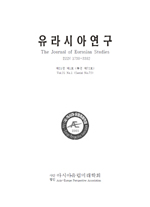- 영문명
- Appeasing the Fear of Abandonment in Asymmetric Alliances: The ROK-US Alliance Case
- 발행기관
- 아시아.유럽미래학회
- 저자명
- 김영준(Young-Joon Kim)
- 간행물 정보
- 『유라시아연구』제11권 제4호, 79~96쪽, 전체 18쪽
- 주제분류
- 사회과학 > 사회과학일반
- 파일형태
- 발행일자
- 2014.12.30
4,960원
구매일시로부터 72시간 이내에 다운로드 가능합니다.
이 학술논문 정보는 (주)교보문고와 각 발행기관 사이에 저작물 이용 계약이 체결된 것으로, 교보문고를 통해 제공되고 있습니다.

국문 초록
동맹의 종류나 그 목적에 관계없이 모든 국가간 동맹들이 상호신뢰의 문제와 연계되어 공통적으로 겪게 되는 딜레마 중 하나가 바로 연루의 공포(fear of entrapment)와 방기의 공포(fear of abandonment)이다. 연루의 공포란 동맹 당사국에 의해 벌어진 물리적 충돌 상황에 다른 동맹국이 자신의 의지와 관계없이 휘말리게 되는 것에 대한 두려움을 의미하며 방기의 공포란 국가가 위기에 맞닥뜨렸을 때 원조를 제공하기로 한 동맹국가가 그 약속을 어길까봐 두려워 하는 것이다. 이 같은 연루와 방기의 공포는 동맹 국가 간 힘의 관계가 비대칭적일수록 더 심화되며, 동맹 당사국들은 상대방이 겪는 공포감을 해소시켜 주어야만 동맹의 관계를 안정적으로 유지할 수 있고, 특히 상대적으로 힘이 강한 국가들은 약소국들의 방기의 공포를 해소시켜 주어야 한다.
비대칭 동맹이 겪는 연루와 방기의 딜레마는 한미 동맹도 예외가 아니다. 한국은 해방 이후부터 미국과의 관계에 있어서 방기의 공포를 늘 겪어 왔으며, 역대의 정부들은 이를 해결하기 위하여 다양한 노력을 해왔다. 이 논문은 한미 동맹이 체결된 이후 현재까지 유지되어 오는 과정에서 미국이 한국이 느끼는 동맹의 딜레마, 특히 방기의 우려를 해결하기 위하여 취한 정책들을 살펴보고 논의하고자 한다. 미국 정부는 한국이 한미동맹에 대하여 느끼는 방기의 우려를 해소하기 위하여 크게 세 가지의 정책을 펼쳐왔다. 그 정책들을 살펴보면 첫 번째는 한국군의 군비 증강 정책이다. 휴전 협정이후 미국은 정전 협정 위반의 소지가 있음에도 불구하고 한국의 군사력 제고를 위하여 군비증강을 도왔다. 두 번째는 한미 양국 군대간 합동 훈련 실시이다. 1969년 포커스 레티나 훈련을 비롯하여 한미 양국군은 다양한 수준과 규모의 합동 군사훈련을 실시함으로써 연합 작전 능력을 향상시켜왔다. 세 번째는 한미 양국간 안보 협의체 구성이다. 양국은 1968년부터 국방 각료들이 연례적으로 안보문제를 협의하다가, 1971년 ‘한미 안보협의회의’를 구성한 것을 비롯하여 다양한 안보 문제 협의 기구를 구성하고 운영함으로써 한국 정부의 안보관련 우려 사항들을 미국에 직접 전달하고 상시적으로 논의할 수 있는 통로를 구성함으로써 한국의 방기 우려를 해소시켜 왔다.
영문 초록
Every international alliances go through difficult times for various reasons. The dilemma created by the fear of entrapment and the fear of abandonment is one of the most common problems that international alliances face. In order to maintain stable alliance, the alliance members must deal with each other’s fear. This article analyzes the policies implemented by the Unites States to appease South Korea’s fear of abandonment by the U.S.. Right after the liberation of the country, Lee Suengman and other Korean right wing politicians began to worry about the U.S. government’s willingness to defend Korea from the communist threat. The U.S. government tried to reduce the size of its military in the Korean peninsula and Lee and his followers saw the troop reduction as a sign of U.S.’s abandonment of Korea. Their fear of abandonment was exacerbated when Dean Acheson, then the U.S. Secretary of State, delivered a speech at the National Press Club on January 12, 1950. In his Press Club speech, Secretary Ahceson warned that the United States would defend its possessions and occupied territories. Then he went on to say that “This defensive perimeters runs along the Aleutians to Japan and then goes to the Ryukus. ... The defensive perimeters runs from the Ryukus to the Philippine Islands.” The message that Lee and the right wing Korean politicians received from the speech was clear. The Korean Peninsula is not included in the Untied States’ defense perimeters. South Korean political leaders were afraid that Kim Il-Sung would interpret the speech as the way they did and attempt to make a radical movement. No more than six month later, the fear became real. Since then South Korean leaders’ fear of abandonment was one of the major sources rattled the US-ROK alliance. Therefore, in order to maintain a stable alliance relations with South Korea, the Unites States government had to take measures to relieve South Korean political leaders’ fear of abandonment.
In this research, I identify three policies implemented by the United States government to stabelize the US-ROK alliance. First is the armament of South Korean military. Despite the risk of violating the Korean Armistice Agreement signed on July 1953, the U.S. government decided to strengthen South Korean Army by allowing arms transfer and arms sales to South Korean government. The weapons placed in Korea included nuclear armed Honest John missiles and 280mm atomic cannons. The Korean Armistice Agreement paragraph 13 (d) mandates that neither side introduce new weapons into Korean Peninsula, other than piece-for-piece replacement of equipment. Therefore, the deployment of nuclear weapons in South Korea was clear abrogation but the United States proceeded to protect South Korea.
목차
Ⅰ. 서 론
Ⅱ. 한국의 방기 우려
Ⅲ. 한국의 방기 우려에 대한 미국의 대책
Ⅳ. 결 론
참고문헌
해당간행물 수록 논문
- 서남해안 해상풍력단지 활성화를 위한 한중 협력방안 연구 - 새만금을 중심으로
- 상하이 협력기구의 평가와 전망
- 대북 지원의 원조효과성 제고를 위한 다자간 신탁기금 설립 방안과 과제
- 중국기업에서 일터학습이 조직몰입과 경력만족에 미치는 영향
- 한국과 독일 주식시장에서의 변동성 전이
- 유럽연합 기업의 사회적 책임을 위한 거버넌스가 한국기업의 사회공헌활동에 갖는 의미 탐색
- 몽골 민주화 이행과정의 분석
- 우크라이나 민족주의 집단의 정치적 위상에 대한 연구
- 비대칭 동맹에서 방기 우려에 대한 대책: 한미 동맹의 사례
- 베이징 컨센서스 비판: 라모와 아리기의 논의를 중심으로
참고문헌
관련논문
사회과학 > 사회과학일반분야 BEST
- AI와 디지털 문화 산업의 결합에서 저작권 및 윤리적 규범 준수의 필요성 연구
- 종합병원 간호사의 환자안전문화인식과 조직의사소통만족이 안전간호활동에 미치는 영향
- 인공지능(AI)과 윤리
사회과학 > 사회과학일반분야 NEW
더보기최근 이용한 논문
교보eBook 첫 방문을 환영 합니다!

신규가입 혜택 지급이 완료 되었습니다.
바로 사용 가능한 교보e캐시 1,000원 (유효기간 7일)
지금 바로 교보eBook의 다양한 콘텐츠를 이용해 보세요!



